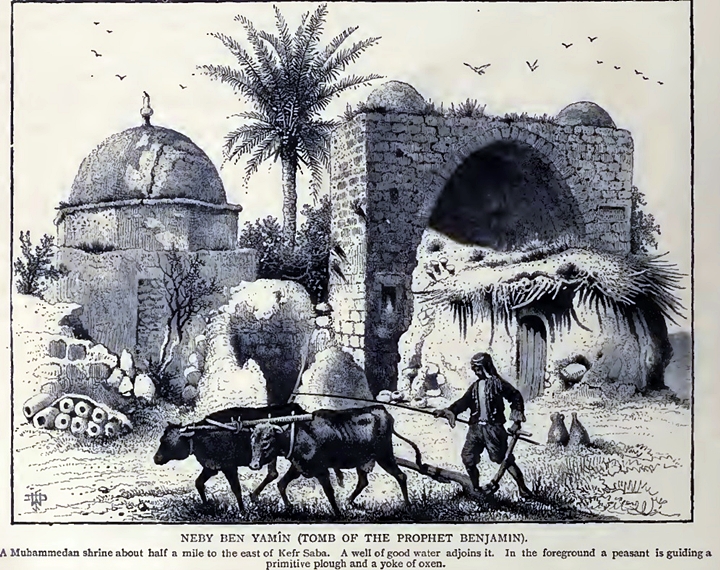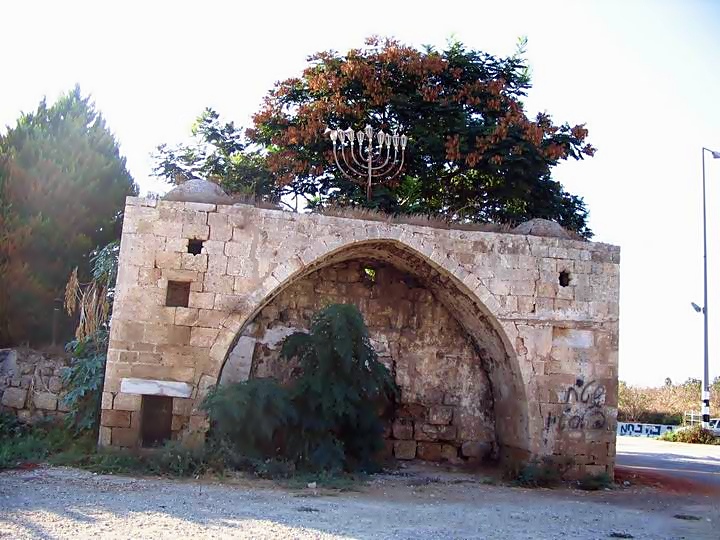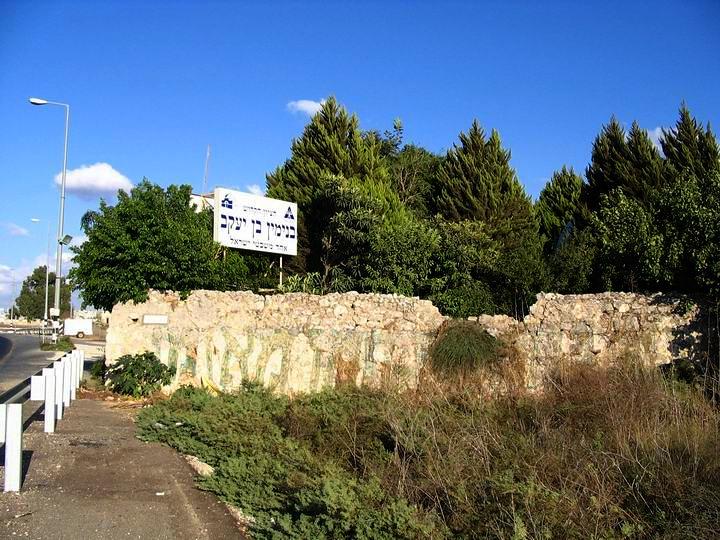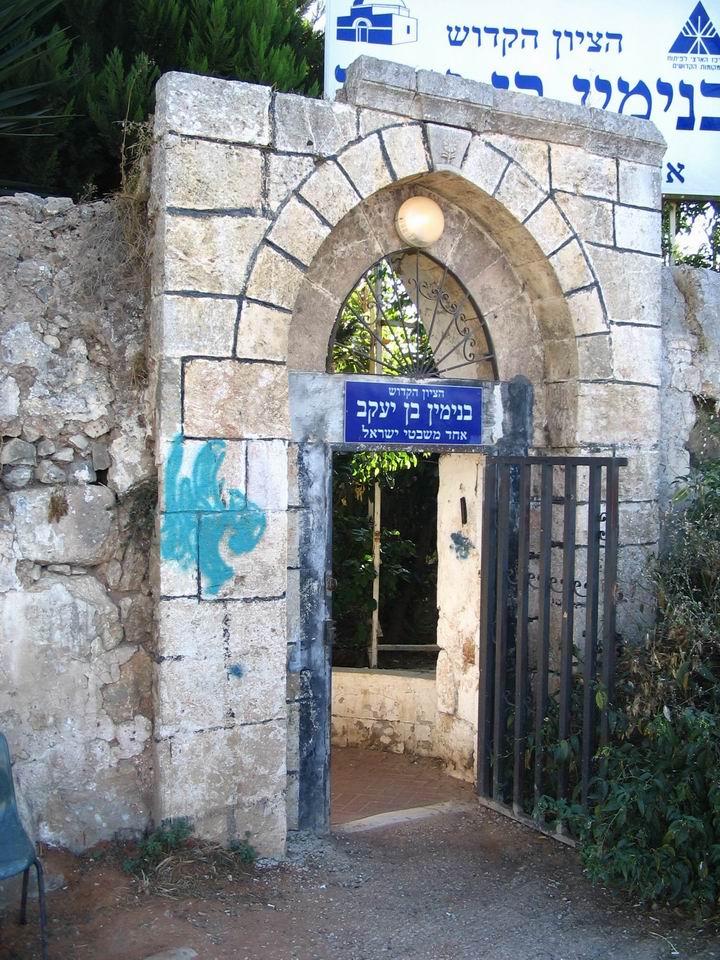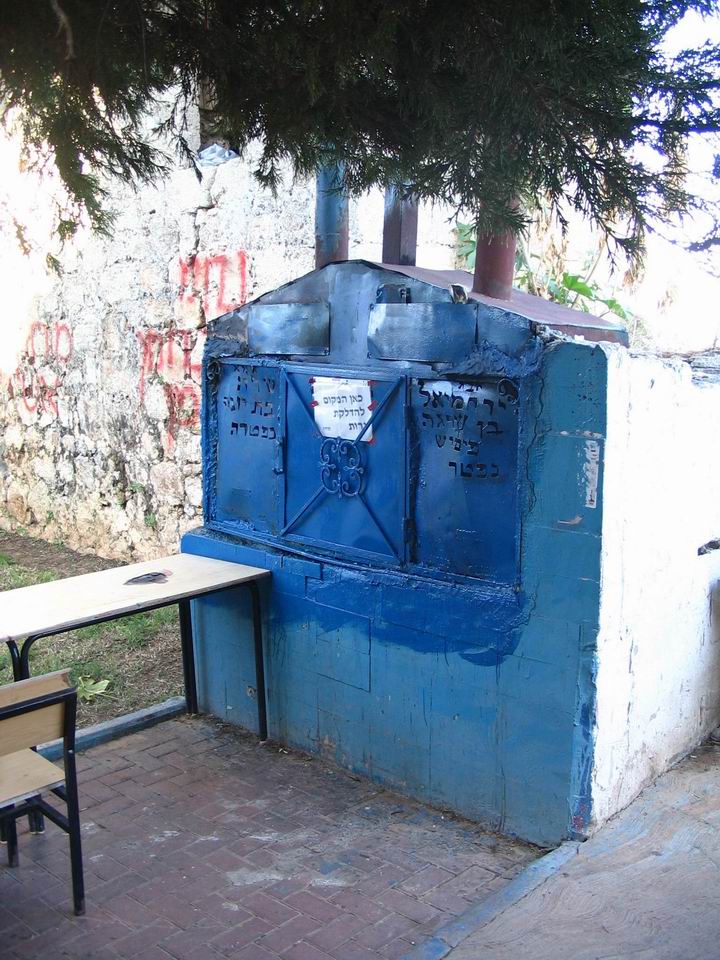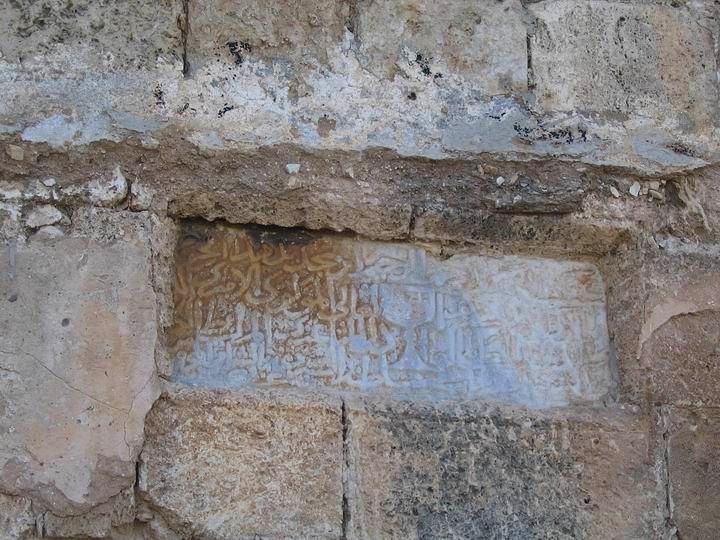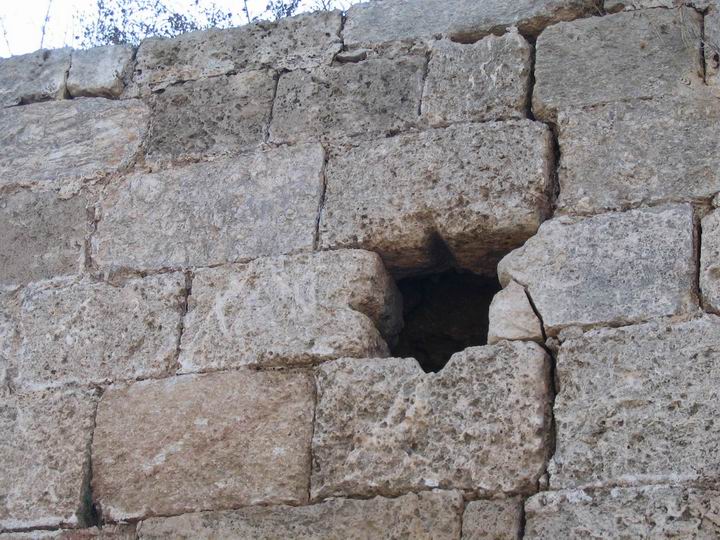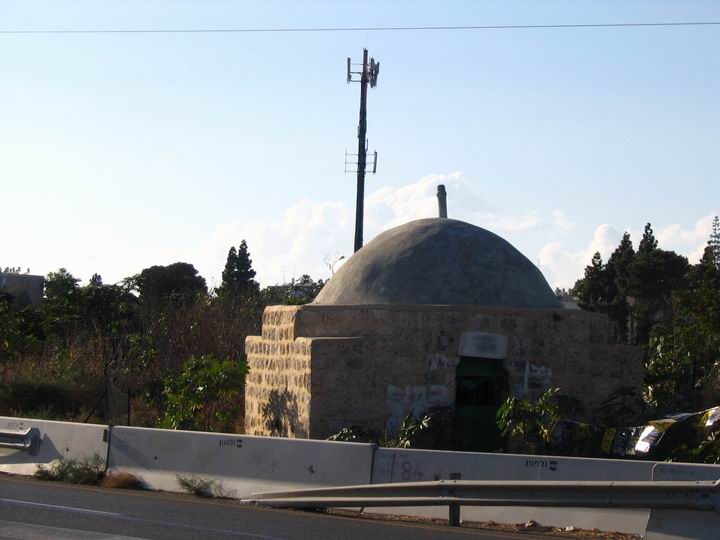According to one of the traditions, this site is the tomb of Benjamin son of Patriarch Jacob and Rachel.
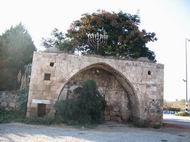
Home > Sites > Sharon > Benjamin Tomb
Contents:
Background
Where buried?
Location
History
Photos
* Exterior
* Interior
* Special
* Neby Sawarka
* Khan
References and links
Etymology
Background:
Benjamin was the youngest of the sons of Jacob, and head of one of the 12 Tribes of Israel. This tribe was located in the center of Israel, between Judah and Ephraim. The region included parts of Jerusalem, and the cities of Beth-El, Givon and Jericho. Both King Saul, the first Israelite King, and Jermiah, one of the greatest prophets, came from the tribe of Benjamin.
Where was Benjamin buried?
There are several traditions for the tomb of Benjamin:
- Near Jerusalem, in an unknown location. Maybe on the side of the road to the tomb of Rachel, where the ruins of an old house is called by the Arabs as the “palace of Benjamin”. Since she was his mother and loved him more than his brothers, it seems proper that he was buried near his mother. However, no tomb is known at the site.
- Kh. Roma – in Netufa valley, east of Hannathon. Unlikely – in this site there is no such tomb.
- Here, Near Nave Yamin and Kefar Sava – the location of this reviewed site.
Location:
The tomb of Benjamin, according to one of the traditions, is located on the road from Kefar-Sava to Kochav-Yair, west of Kalkilia. This location used to be located on the main road from North (Galilee, Syria and beyond) and south (Egypt). The next stop south was Jaljulia, the Gilgal of the Sharon.
The tomb is called by the Arabs “E Neby Yamin” Neby.
On the north side of the tomb is an Arabic stone plate which praises the lord.
A nearby agriculture village, Neve Yamin (Benjamin’s oasis), is named after the tomb.
History of the place:
- Roman Byzantine
The site was populated in the late Roman and Byzantine periods (2nd to 7th century AD). There are two wells, one can be seen near the tomb.
- Mameluke
The Tomb, and some of the ruins around it, are from the Mameluke period (14th century AD). A hostel (Khan) nearby has the stone plate with the date of 1312. The sebil (public water fountain) in front of the tomb was built on the side of the Mameluke “Postal” road from Cairo to Damascus. This road was initiated by the first Mameluke emperor, Baybars, in 1268. It served the Mameluke empire until the 16th century.
- Ottoman period
The area was examined in the Palestine Exploration Foundation (PEF) survey (1866-1877) by Wilson, Conder and Kitchener. This map is part of sheet XI of their survey results, with the tomb marked as Neby Yemin (‘Prophet Benjamin’). Adjacent to it is Neby Serakah (‘Prophet Serakah’). Their report did not include details on the two tombs.
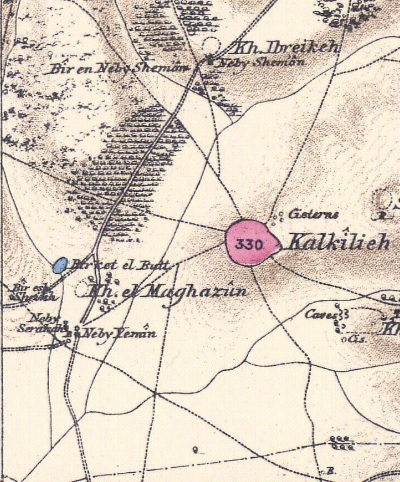
An illustration of the tomb dated 1882 is shown here. This is from a book by CH. W. Wilson , one of the PEF explorers. The title reads: “Neby Ben Yamin – Tomb of the prophet Benjamin. A Mohammedan shrine about half a mile east of Kfar Saba. A well of good water adjoins it. In the foreground a peasant is guiding a primitive plough and a yoke of oxen”.
In the back of this scene is the dome of the tomb. In front of it is the structure of the Sebil, reused by the farmer as the rear wall for his mud house. Also in this illustration are beehive canisters.
Ch. W. Wilson, Picturesque Palestine, 1882, Vol III P. 116; engravings on wood
Photos:
(a) Exterior:
This is the view from the north side. This structure is actually a sebil – a 14th century Turkish public water fountain. The visitors washed themselves before entering the site for a prayer.
The site is neglected and dirty, especially after some holidays when busloads of people, mostly Jewish, come to pray. In the last 10 years there is a rise in the number of people that come to Holy tombs, a phenomenon that is hard to explain. Dozens of such sites were rebuilt and revisited after many years of neglect. Every weekend there are hundreds of believers that tour the Tomb sites around Israel, asking for hearing their prayers.
The view of the site from the south side. On the right (hidden in this photo) is one of the two wells.
The gate to the yard. In Hebrew the sign reads: “The Holy Zion – Benjamin son of Jacob – one of the Israelite tribes”.
(b) Interior:
The following photo shows the entrance to the room, with the Hebrew title “Benjamin tomb”.
The photo below shows the ceiling of the chamber.
This blue box outside in the yard is used to light up the candles, and carry them into the chamber of the tomb.
(c) Special Architectural items:
On the north side is an Arabic stone tablet, praising Allah.
Another element are two holes in the shape of Mogen David.
(d) Neby Sawarka:
Near the tomb of Benjamin, across the main road, is another Tomb of a Sheik, Neby Sawarka. Who is this Sheikh? The tomb appears on the PEF map as Neby Serakah (‘Prophet Serakah’).
Inside the caped structure, as seen through the caged window, is the tomb. As in all Muslim tombs, it is wrapped with a green cloth, seen to the side of the tomb.
(e) Khan and Well
Across the road are ruins of a Mameluke khan.
There are some interesting architectural elements, such as the arches.
In modern times, the waters from the well were used to supply the trains on the nearby railroad, 300m east of the site. This pool was one of the reservoirs.
References and links:
- Israel Guide [Keter & I-DOD, 1979] – “Sharon” – Kefar Sava sites.
- Ariel Encyclopedia – Dr Z. Vilnai [1978], p. 960.
- Muslim shrines in Israel
* Internal sites:
- Rachel’s tomb – Benjamin’s mother; died in his childbirth on the way to Bethlehem
Etymology (behind the name):
- BenJamin – one of the tribes of Israel, son of Jacob.
Ben in Hebrew is “son”, Yamin in Hebrew is “right” (in direction). Since the right side was the sword side and regarded as the side of your alley and friend, the meaning of the name was “the son who was an alley”.
- Ben Oni – Hebrew: “Son of my agony”; Benjamin’s original name as was given by his mother, who died while giving birth to her son. Genesis 35:18: “…she called his name Benoni: but his father called him Benjamin”.
- Neve – in Hebrew, means “oasis” or “house”. The village near the tomb is called Neve Yamin, which can be translated to the (resting) house of Benjamin.
BibleWalks.com – walk with us through the sites of the Holy Land
Gilgal (in Sharon)<<<–previous Sharon site—<<<All Sites>>> next Sharon site —>>> Jaffa
This page was last updated on Apr 17, 2020 (add naming, added photos)
Sponsored links:
